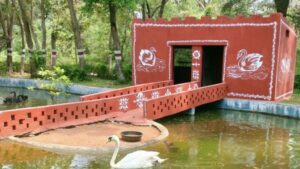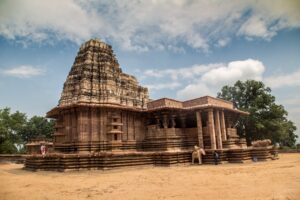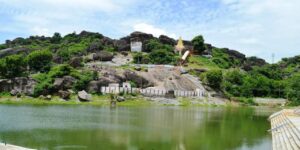Warangal Fort: A Glimpse into Telangana’s Glorious Past

Standing tall in the heart of Telangana, Warangal Fort is a testament to the grandeur of the Kakatiya dynasty. Built in the 13th century, this fort showcases the architectural brilliance and historical significance of a bygone era. Its intricate carvings, massive gateways, and rich history make it a must-visit for history enthusiasts and travelers alike.
Historical Significance
- Origins: Constructed under the reign of King Ganapati Deva and later enhanced by his daughter Rani Rudrama Devi, the fort became the capital of the Kakatiya dynasty.
- Sieges and Battles: In 1309, the fort faced a significant siege by Malik Kafur, the general of Alauddin Khilji. Despite a valiant defense by King Prataparudra II, the fort eventually succumbed, marking a pivotal moment in its history. Wikipedia
- Subsequent Rule: Post the Kakatiya era, the fort came under the control of the Delhi Sultanate, followed by the Bahmani Sultanate, and eventually the Qutub Shahi dynasty.

Architectural Marvels
- Triple Fortification: The fort boasts three concentric circular walls, with the innermost made of stone and the outer two of mud, spanning approximately 19 km in circumference. Wikipedia
- Kakatiya Kala Thoranam: These are four grand stone gateways, each standing at 30 feet, adorned with intricate carvings of lotus buds, mythical creatures, and more. Telangana Tourism
- Kush Mahal: A rectangular hall built during the Tughlaq dynasty, showcasing Indo-Islamic architectural influences.
- Temple Ruins: The fort houses remnants of a grand Shiva temple, with freestanding pillars and intricate carvings, reflecting the religious tolerance of the era. Wikipedia
UNESCO World Heritage Tentative List
In 2010, Warangal Fort was added to the UNESCO World Heritage Tentative List, recognizing its cultural and historical importance.
Visitor Information
- Timings: Open daily from 10:00 AM to 7:00 PM.
- Entry Fees:
- Indians: ₹15
- Foreigners: ₹200
- Video Camera: ₹25
- Sound & Light Show:
- Timings: 6:30 PM (Telugu), 7:30 PM (English)
- Fees:
- Adults: ₹40
- Children: ₹20
How to Reach Warangal Fort
- By Air: The nearest airport is Hyderabad’s Rajiv Gandhi International Airport, around 160 kilometers from Warangal. Visitors can hire taxis or take buses from the airport to reach the city.
- By Rail: Warangal has a well-connected railway station, located just a few kilometers from the fort.
- By Road: The city has excellent road connectivity with nearby towns and cities.
Nearby Attractions
- Thousand Pillar Temple: An architectural marvel dedicated to Lord Shiva, Vishnu, and Surya.
- Ramappa Temple: A UNESCO World Heritage site known for its intricate carvings and floating bricks.
- Bhadrakali Temple: Dedicated to Goddess Bhadrakali, offering panoramic views of the city.
Conclusion
Warangal Fort stands as a living testament to India’s rich history, offering an immersive experience for those who visit. Its captivating charm and historical significance make it an essential destination for heritage lovers.





